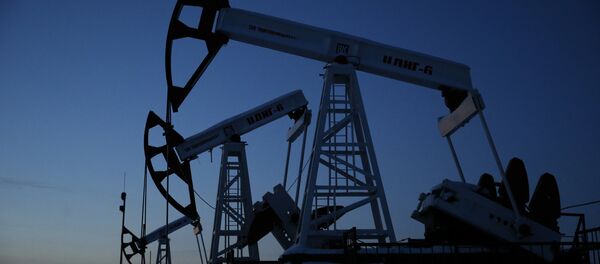The US Energy Department has worked out three scenarios for oil prices – optimistic, realistic and negative.
Optimistic: $250 a Barrel
In the most optimistic scenario, oil will reach $250 a barrel (in 2013 prices) in 23 years.
At the same time, increased costs of oil would force consumers to use alternative energy sources, including renewables, such as wind energy, solar energy, and biofuel.
As for OECD countries, their growth simply needs to stay on track from where it is today.
Higher oil prices would also force the OECD to improve the efficiency of their fuel consumption and switch to less expensive kinds of fuel if possible.
By 2040, the OECD is expected to consume between 44.1 and 46.1 million barrels of oil a day.
As for output, OPEC countries will increase their production, with their global market share dropping to 34 percent in 2040.
Realistic: $140 a Barrel
According to the realistic scenario, $140 a barrel is possible if exploration and production costs increase by 1.6 percent a year, over the next 23 years.
This scenario predicts that OPEC countries will increase their global market share to 39-40 percent. Consumption in OECD countries would rise from 45.5 barrels a day in 2012 to 46.1 million barrels in 2040.
As a result, non-OECD would be driving demand for oil, consuming between 44.8 to 74.8 million barrels a day.
Negative: $76 a Barrel
In the negative scenario oil can only reach $76 a barrel. In this case, growth expectaions for non-OECD countries flounder, hitting only 3.9 percent.
With low crude prices, OPEC is expected to raise output and increase their market share to 48 percent by 2040. At the same time, non-OPEC would decrease output.
Unrealistic Expectations?
Currently, any long-term prognosis for oil prices cannot be reliable.
"Oil over $140 a barrel doesn’t look realistic not only because this is a very high price but also because the prognosis is too long-term. By 2040, the situation in commodity markets may radically change. This is why no Saudi Arabia is trying to cut reliance on oil in its economy," Alyona Afanasieva, senir analyst at Forex Club, told the Russian newspaper Vzglyad.
What is more, demand for oil may drop amid the expansion of renewable energy, she added.
"As for now, Brent cannot reach over $50 a barrel, even despite the ongoing instability in Nigeria, Libya, Venezuela and Kuwait. Only disruptions in output in certain countries could neutralize the effect of the slump in the Chinese economy and growing output by OPEC and Russia," the analyst said.
According to her, Brent may get another chance to grow by the OPEC meeting in June, during which some aspect of the cartel’s policy may be corrected.
Irreplaceable: Oil and Gas Will Keep the Lead
American and Russian specialists agree that the hydrocarbon era is far from being over. Despite the fact that renewable energy sources will rapidly develop they will not be able to replace traditional oil and gas fuel.
The previous year was one of the most successful in the history of renewable energy, in terms of finances. Investments in renewable energy sources surpassed investments into fossil fuel by twofold, according to Bloomberg. The German government said the country would totally switch to renewable energy by 2050.
However, the US Energy Department does not share this optimistic view. According to its report, oil will remain the main global source of energy for the next 25 years. By 2040, 30 percent of energy in the world will be produced by oil. By 2040, the share of oil in global energy production will decrease only by three percent from the current level.
Renewable energy sources will develop the quickest among other energy sources, but they will not be able to replace oil, gas and coal. However, by 2040 renewable energy is expected to have a market share of 16 percent.
"Hydrocarbons will hold the lead in the fuel basket. By 2040, their share will be 51.4 percent," a report by the Institute for Energy Research in the Russian Academy of Sciences read.
What is more, Russia is expected to be the leader in the global hydrocarbon market, both in terms of production and exports.
Russia will significantly increase its production of gas, renewable energy and atomic energy and decrease its oil output. According to Russian experts, Russia will reach an output of 900 billion cubic meters of gas a year. The same figure is expected for the US. Oil output will stabilize in Russia by 2030 at 500 million tons a year, close to Saudi Arabia and the US.






